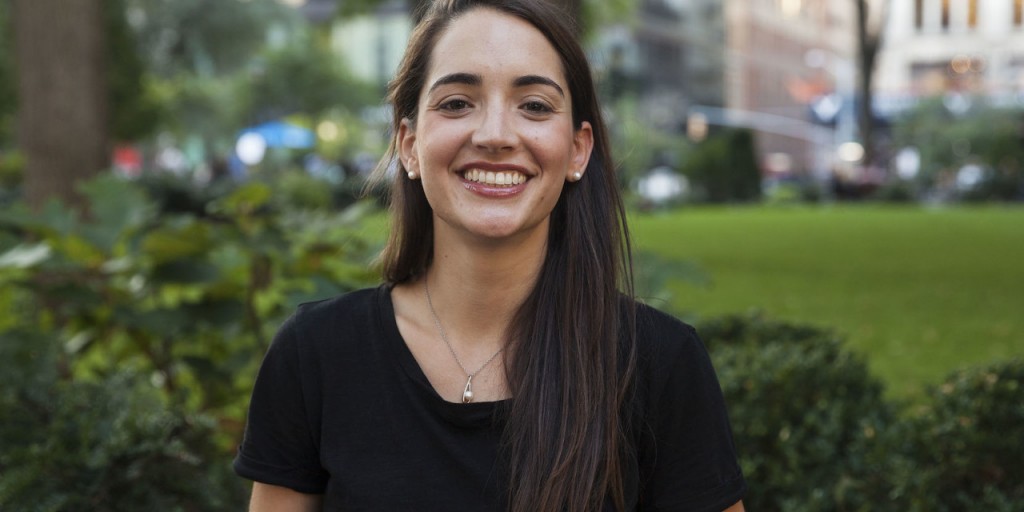Marcela Sapone: The modern luxury supply chain is log jammed at the front door of your apartment building.
NEW YORK — With Movebutter getting into the direct-to-consumer grocery business (think: all the organic produce, and premium household staples you could want); with Brandless, its closest competitor, having recently launched with the goal of becoming the generic store brand for a new generation; and with Quip working to turn daily dental care into an end-to-end elevated routine, the pattern is unmistakably clear: The modern luxury space is moving into recurring commerce with pace.
To be sure, this is just a small sample size of the new brands that are reimagining key categories that would be perfectly at home in a Unilever portfolio. The fact that there’s a ton of newfound investment interest and founding activity here too should come as no surprise, then. For one, Dollar Shave Club had an outstanding exit a year ago — to Unilever, no less. And Forerunner Ventures, one of the most active (and prescient) investors in the modern luxury space, has a hot hand at the moment having bet wisely with Warby Parker, Glossier, Bonobos, and Outdoor Voices, among a handful of others.
Brands like Movebutter and Brandless are rethinking important CPG categories, but so far in this CPG and recurring spend narrative, the focus has been placed on product. That makes sense. But the formula that ‘disruptive’ startups have followed is a well-worn one at this point: Pick a punchy name, go with a clean minimal design, secure VC money to spend on a subway, taxi, or airport ad campaign, and you are in business — or so the thinking goes.
This is all well and good, but one vital element has been overlooked for far too long in this narrative: methods of distribution. How do we fully modernize the final leg of service to make sure we get these goods to people in a well-considered, thoughtful way? Indeed, a new chapter in commerce has begun that will completely change how we think about consumerism from here on out — and thoughtful fulfillment sits quietly at the center of it all. Companies — from the Procter & Gambles of the world down to the plucky upstarts — will need to adjust their strategies accordingly.
How can brands reach this new ‘thoughtful distribution’ future sooner (rather than later)?
Thoughtful distribution ensures that our smarter residential buildings, artificial intelligence, voice, and human intuition all work together in concert. It sounds heady, sure, but expect this to become the reality faster than you might think — and it represents a multi-billion dollar realignment.
Reallocate marketing spend on actual innovation. NYU professor Scott Galloway leveled some tough talk on CPG giants in a recent Financial Times article, arguing that “Their capital needs to be allocated out of broadcast media and into innovation . . . If the [marketing] spending does come back, [brand owners] will put more money into research and development, more money into social media, more money into developing different distribution channels.”
He later asserted that if these brands don’t find new and innovative distribution channels, “it doesn’t matter how good their ads are.” The same holds true for upstarts. If you’re coming into the home via a package stalled on the front door, you’re still living in the past.
Think more seamlessly. We find ourselves moving away from a cornerstone dynamic that has ruled commerce for centuries — “market to me” — and into a new system where commerce is seamlessly integrated into what we do and how we live. We can squint and see the horizon, with the rise of voice devices entering the home. It is still in its early, awkward phase, but being able to order something when it is top of mind with something like Google Home via Walmart needs to become more approachable soon.
When we combine this idea with the fact that the world is becoming more urbanized today, suddenly our residential buildings need a better way to interact with these advances in commerce. Right now, there are packages stacking up with doormen, waiting for the last meter, waiting to get into homes. The entire sophisticated supply chain (and well-thought out product) is becoming log jammed at the front door of your apartment building.
Consider this amazing future scenario. John comes home to his fridge that’s been re-stocked with organic produce from the local farmers market, has his Harry’s razors restocked without asking, and has a new Aesop facial product to try introduced to his medicine cabinet on an opt-in basis.
With once inconceivable combinations like Walmart and Google, Amazon and Whole Foods, Sephora and Estée Lauder, big brands are joining forces to get ever closer to the consumer. This last meter is key.
—
Lean Luxe subscriber Marcela Sapone is the co-founder and CEO of Alfred, a NYC-based on-demand hospitality and services company. The views reflected here are those of the author and do not necessarily reflect the views of Lean Luxe.






